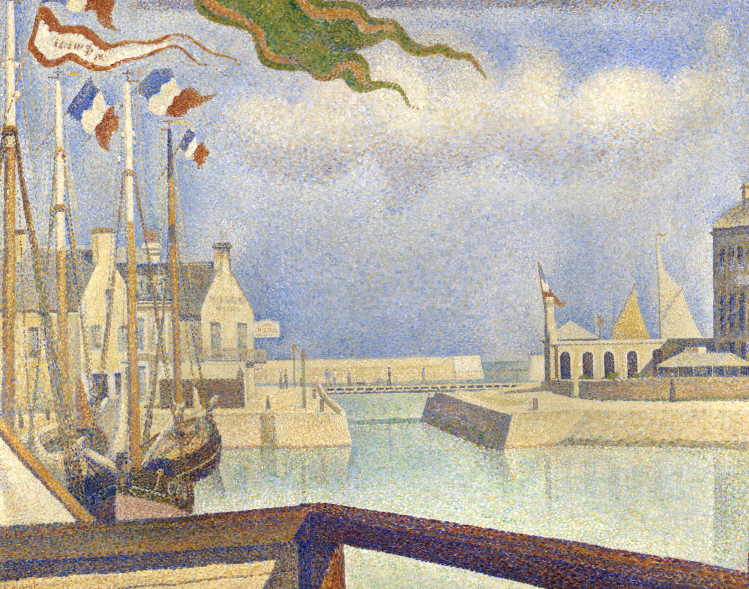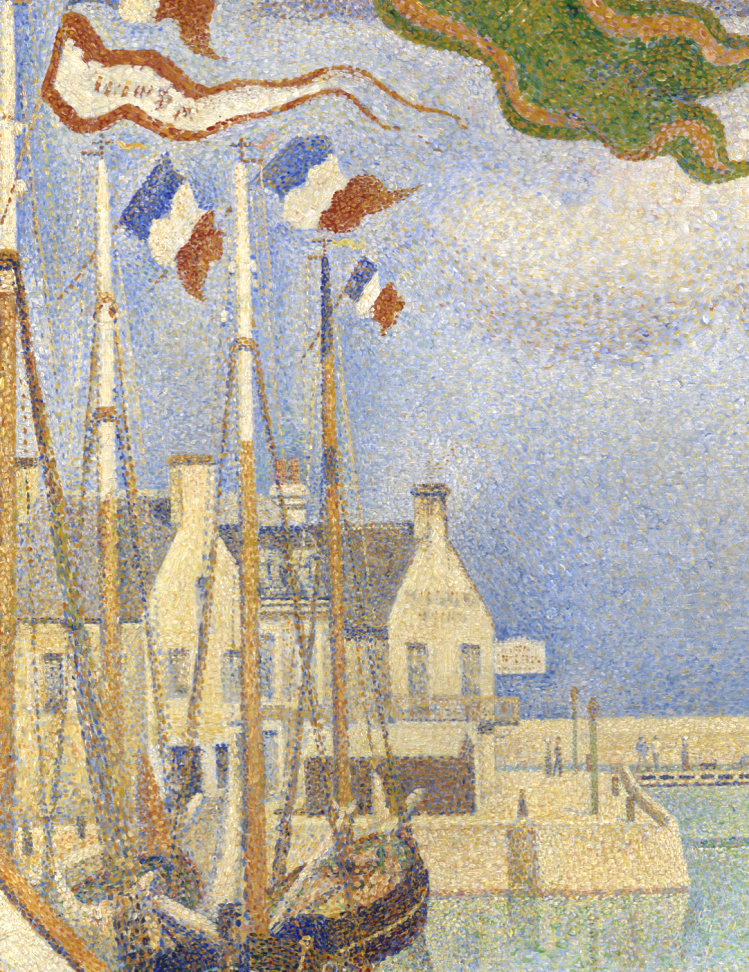
George Seurat. Sunday at Port-en-Bessin
George Seurat is the key artist who allows us to understand Post-Impressionism. He was a painter famous for his refined style. He lived a short life: he died of an ordinary flu at the age of 32. However he devised to the world a complex and rigorous technique of painting, which wrote a new page in history of art.

Seurat and the invention of Pointillisme
George Seurat formulated a scientific theory about the relationship between light and colour, creating Pointillism. This unique technique is based on a thick dab of distinct dots of colour applied in patterns. It is the ability of the eye and mind of the viewer that blends the colour spots to form an extraordinarily poetic image.
Among his masterpieces there’s also “Sunday at Port-en-Bessin” (1888), where all the features typical of the Pointillism appear: the shining light, the reflections of the boats and the buildings, the depth of the horizons.
Pointillism allowed Seurat to create masterpieces without applying colours on the canvas in a homogeneous way, but using dots and dashes.
In those years, in the late 19th century, the studies on physics and optics, the development of the photography, the scientific research on the natural laws which studied how human eye could see the colours, opened an experimental and innovative phase in painting. Seurat studied those theories for a long time and came to an important conclusion: if the light is the result of the combination of several colours, thus, also in painting the light can’t be represented either with only one colour or by mixing various colours, but only by juxtaposing several colours.

.

